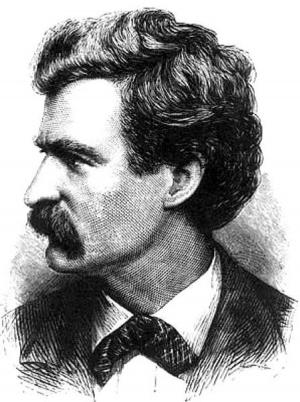Principles of Political Economy: Abridged with Critical, Bibliographical and Explanatory Notes and a Sketch of the History of Political Economy
Nonfiction, Religion & Spirituality, New Age, History, Fiction & Literature| Author: | John Stuart Mill | ISBN: | 9781465549426 |
| Publisher: | Library of Alexandria | Publication: | March 8, 2015 |
| Imprint: | Language: | English |
| Author: | John Stuart Mill |
| ISBN: | 9781465549426 |
| Publisher: | Library of Alexandria |
| Publication: | March 8, 2015 |
| Imprint: | |
| Language: | English |
An experience of five years with Mr. Mill's treatise in the class-room not only convinced me of the great usefulness of what still remains one of the most lucid and systematic books yet published which cover the whole range of the study, but I have also been convinced of the need of such additions as should give the results of later thinking, without militating against the general tenor of Mr. Mill's system; of such illustrations as should fit it better for American students, by turning their attention to the application of principles in the facts around us; of a bibliography which should make it easier to get at the writers of other schools who offer opposing views on controverted questions; and of some attempts to lighten those parts of his work in which Mr. Mill frightened away the reader by an appearance of too great abstractness, and to render them, if possible, more easy of comprehension to the student who first approaches Political Economy through this author. Believing, also, that the omission of much that should properly be classed under the head of Sociology, or Social Philosophy, would narrow the field to Political Economy alone, and aid, perhaps, in clearer ideas, I was led to reduce the two volumes into one, with, of course, the additional hope that the smaller book would tempt some readers who might hesitate to attack his larger work. In consonance with the above plan, I have abridged Mr. Mill's treatise, yet have always retained his own words; although it should be said that they are not always his consecutive words. Everything in the larger type on the page is taken literally from Mr. Mill, and, whenever it has been necessary to use a word to complete the sense, it has been always inserted in square brackets. All additional matter introduced by me has been printed in a smaller but distinctive type. The reader can see at a glance which part of the page is Mr. Mill's and which my own. It has seemed necessary to make the most additions to the original treatise under the subjects of the Wages Question; of Wages of Superintendence; of Socialism; of Cost of Production; of Bimetallism; of the Paper Money experiments in this country; of International Values; of the Future of the Laboring-Classes (in which the chapter was entirely rewritten); and of Protection. The treatment of Land Tenures has not been entirely omitted, but it does not appear as a separate subject, because it has at present less value as an elementary study for American students. The chapters on Land Tenures, the English currency discussion, and much of Book V, on the Influence of Government, have been simply omitted. In one case I have changed the order of the chapters, by inserting Chap. XV of Book III, treating of a standard of value, under the chapter treating of money and its functions. In other respects, the same order has been followed as in the original work. Wherever it has seemed possible, American illustrations have been inserted instead of English or Continental ones. To interest the reader in home problems, twenty-four charts have been scattered throughout the volume, which bear upon our own conditions, with the expectation, also, that the different methods of graphic representation here presented would lead students to apply them to other questions. They are mainly such as I have employed in my class-room. The use and preparation of such charts ought to be encouraged. The earlier pages of the volume have been given up to a “Sketch of the History of Political Economy,” which aims to give the story of how we have arrived at our present knowledge of economic laws. The student who has completed Mill will then have a very considerable bibliography of the various schools and writers from which to select further reading, and to select this reading so that it may not fall wholly within the range of one class of writers. But, for the time that Mill is being first studied, I have added a list of the most important books for consultation. I have also collected, in Appendix I, some brief bibliographies on the Tariff, on Bimetallism, and on American Shipping, which may be of use to those who may not have the means of inquiring for authorities, and in Appendix II a number of questions and problems for the teacher's use
An experience of five years with Mr. Mill's treatise in the class-room not only convinced me of the great usefulness of what still remains one of the most lucid and systematic books yet published which cover the whole range of the study, but I have also been convinced of the need of such additions as should give the results of later thinking, without militating against the general tenor of Mr. Mill's system; of such illustrations as should fit it better for American students, by turning their attention to the application of principles in the facts around us; of a bibliography which should make it easier to get at the writers of other schools who offer opposing views on controverted questions; and of some attempts to lighten those parts of his work in which Mr. Mill frightened away the reader by an appearance of too great abstractness, and to render them, if possible, more easy of comprehension to the student who first approaches Political Economy through this author. Believing, also, that the omission of much that should properly be classed under the head of Sociology, or Social Philosophy, would narrow the field to Political Economy alone, and aid, perhaps, in clearer ideas, I was led to reduce the two volumes into one, with, of course, the additional hope that the smaller book would tempt some readers who might hesitate to attack his larger work. In consonance with the above plan, I have abridged Mr. Mill's treatise, yet have always retained his own words; although it should be said that they are not always his consecutive words. Everything in the larger type on the page is taken literally from Mr. Mill, and, whenever it has been necessary to use a word to complete the sense, it has been always inserted in square brackets. All additional matter introduced by me has been printed in a smaller but distinctive type. The reader can see at a glance which part of the page is Mr. Mill's and which my own. It has seemed necessary to make the most additions to the original treatise under the subjects of the Wages Question; of Wages of Superintendence; of Socialism; of Cost of Production; of Bimetallism; of the Paper Money experiments in this country; of International Values; of the Future of the Laboring-Classes (in which the chapter was entirely rewritten); and of Protection. The treatment of Land Tenures has not been entirely omitted, but it does not appear as a separate subject, because it has at present less value as an elementary study for American students. The chapters on Land Tenures, the English currency discussion, and much of Book V, on the Influence of Government, have been simply omitted. In one case I have changed the order of the chapters, by inserting Chap. XV of Book III, treating of a standard of value, under the chapter treating of money and its functions. In other respects, the same order has been followed as in the original work. Wherever it has seemed possible, American illustrations have been inserted instead of English or Continental ones. To interest the reader in home problems, twenty-four charts have been scattered throughout the volume, which bear upon our own conditions, with the expectation, also, that the different methods of graphic representation here presented would lead students to apply them to other questions. They are mainly such as I have employed in my class-room. The use and preparation of such charts ought to be encouraged. The earlier pages of the volume have been given up to a “Sketch of the History of Political Economy,” which aims to give the story of how we have arrived at our present knowledge of economic laws. The student who has completed Mill will then have a very considerable bibliography of the various schools and writers from which to select further reading, and to select this reading so that it may not fall wholly within the range of one class of writers. But, for the time that Mill is being first studied, I have added a list of the most important books for consultation. I have also collected, in Appendix I, some brief bibliographies on the Tariff, on Bimetallism, and on American Shipping, which may be of use to those who may not have the means of inquiring for authorities, and in Appendix II a number of questions and problems for the teacher's use















